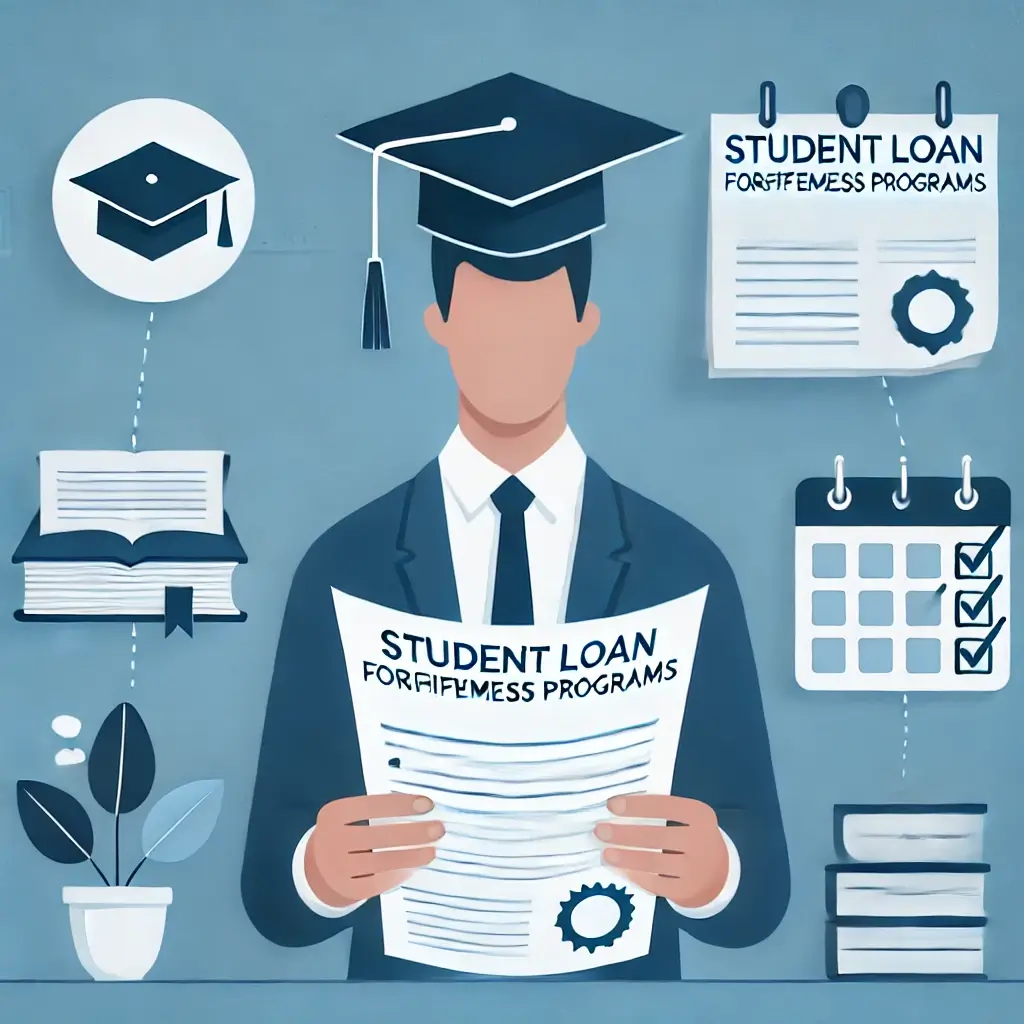Taking out student loans is often necessary to fund higher education, but managing those loans effectively is crucial to avoiding financial stress after graduation. Mastering Student Loans Management means understanding your loan options, repayment plans, and strategies to minimize debt. In this guide, we’ll walk through the best ways to manage your student loans from the moment you borrow to the day you make your final payment.
1. Know Your Loan Types
The first step in mastering student loans management is understanding the type of loan you have. Federal and private loans have different terms, interest rates, and repayment options, so it’s important to know which type of loan you’re working with.
1.1 Federal Student Loans
Federal loans, provided by the U.S. Department of Education, offer flexible repayment options and various protections for borrowers.
- Direct Subsidized Loans: For undergraduate students with demonstrated financial need. The government pays the interest while you’re in school.
- Direct Unsubsidized Loans: Available to undergraduate, graduate, and professional students, with interest accruing while you’re in school.
- Direct PLUS Loans: For graduate students or parents of undergraduates, with higher interest rates and a required credit check.
1.2 Private Student Loans
Private loans are provided by banks, credit unions, and online lenders. They typically have higher interest rates, fewer repayment options, and less borrower protection than federal loans. These loans may require a cosigner and are based on creditworthiness.
2. Creating a Student Loan Repayment Strategy
Once you graduate or leave school, it’s time to start paying off your student loans. Developing a solid repayment strategy is key to mastering student loans management.
2.1 Understand Your Grace Period
Most federal student loans offer a grace period, which is the time between leaving school and when your first loan payment is due. Typically, the grace period lasts six months for Direct Loans.
During this period, consider your financial situation and decide how much you can afford to pay once repayment begins. It’s also a good time to explore repayment options.
2.2 Explore Repayment Plans
Federal loans offer several repayment plans, allowing you to choose the one that best fits your financial situation. Here’s a breakdown of your options:
- Standard Repayment Plan: Fixed monthly payments for up to 10 years. This plan allows you to pay off loans faster and with less interest but requires higher monthly payments.
- Graduated Repayment Plan: Payments start low and increase every two years. This plan is ideal if you expect your income to rise over time.
- Income-Driven Repayment Plans: Payments are based on your income and family size, making them more affordable. Common plans include Income-Based Repayment (IBR), Pay As You Earn (PAYE), and Revised Pay As You Earn (REPAYE).
Private loans may have fewer repayment options, but some lenders offer flexible plans. Always check with your lender to understand what’s available.
3. Making Payments During School
A smart way to master student loans management is by making payments on your loans while you’re still in school. Even small payments can prevent interest from capitalizing, reducing the total amount you’ll owe after graduation.
3.1 Benefits of Paying Interest Early
For unsubsidized loans, interest accrues while you’re in school. By making interest payments during this time, you can prevent that interest from being added to your loan balance, which saves you money in the long run.
3.2 Paying More Than the Minimum
If you can afford it, paying more than the required minimum each month reduces your loan balance faster, cutting down on interest costs over time. This strategy can shorten your repayment period and help you save thousands in interest.

4. Strategies for Managing Multiple Loans
If you have multiple student loans, it can be difficult to keep track of payments. Here are some strategies for managing multiple loans effectively.
4.1 Loan Consolidation
Federal loan consolidation combines multiple federal loans into one, simplifying your monthly payments. While consolidation doesn’t lower your interest rates, it can extend your repayment term, making payments more manageable.
4.2 Student Loan Refinancing
Refinancing allows you to combine both federal and private loans into one new loan, often with a lower interest rate. However, refinancing federal loans with a private lender means losing federal protections, such as access to income-driven repayment plans and loan forgiveness.
4.3 Use Auto-Pay
Many lenders offer discounts for setting up automatic payments. Not only will this save you money on interest, but it also ensures that you never miss a payment, helping you avoid late fees and protecting your credit score.
5. Loan Forgiveness Programs
One of the most important aspects of mastering student loans management is understanding the loan forgiveness programs available to you. Certain federal loans are eligible for forgiveness under specific conditions.
5.1 Public Service Loan Forgiveness (PSLF)
PSLF forgives the remaining balance on your federal loans after you’ve made 120 qualifying payments while working full-time for a qualifying employer, such as a government or nonprofit organization.
5.2 Teacher Loan Forgiveness
Teachers who work in low-income schools for five consecutive years may be eligible to have up to $17,500 in Direct Loans forgiven.
5.3 Income-Driven Repayment Plan Forgiveness
If you’re enrolled in an income-driven repayment plan, any remaining balance on your federal loans can be forgiven after 20 or 25 years of payments, depending on the plan.
By taking advantage of forgiveness programs, you can reduce your loan balance significantly.
6. Managing Student Loan Debt After Graduation
Once you’ve graduated, it’s essential to stay on top of your payments to maintain good credit and avoid default.
6.1 Keep Track of Due Dates
Missing payments can lead to delinquency or default, which can damage your credit and result in added fees. Set up reminders or use online tools to track your payment schedule.
6.2 Consider Deferment or Forbearance
If you’re struggling to make payments, federal loans offer deferment and forbearance options, which temporarily pause payments during times of financial hardship. While interest may continue to accrue, these options can help you avoid default.
6.3 Avoid Loan Default
Defaulting on your student loans has serious consequences, including wage garnishment, collection fees, and damage to your credit score. If you’re having trouble making payments, contact your loan servicer to explore alternative repayment options.
7. Frequently Asked Questions About Student Loans Management
7.1 Can I Change My Repayment Plan After I Start Repaying?
Yes, federal loans allow you to change your repayment plan at any time. If you’re struggling to make payments, switching to an income-driven repayment plan can lower your monthly obligations.
7.2 Can I Make Extra Payments on My Student Loans?
Absolutely. Making extra payments is a great way to pay off your loans faster and save on interest. Just be sure to specify that your extra payments should go toward the principal balance.
7.3 Can I Refinance My Federal Loans?
Yes, you can refinance federal loans with a private lender, but this will result in losing access to federal protections, including income-driven repayment plans and loan forgiveness programs.
Conclusion on Mastering Student Loans Management
Mastering Student Loans Management requires careful planning, understanding your options, and making informed decisions throughout the repayment process. By taking advantage of flexible repayment plans, paying off loans faster when possible, and exploring forgiveness programs, you can minimize your debt and take control of your financial future. With the right strategy in place, you can manage your student loans effectively and confidently.


